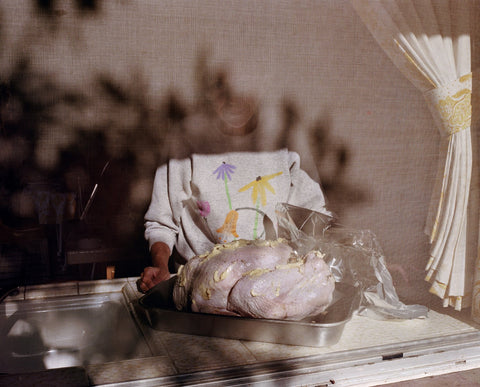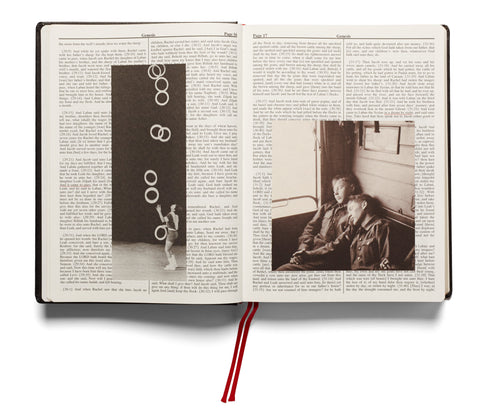
Guido Guidi’s city is realistic and at the same time fantastical, a space with frayed, fluid boundaries, the ultimate setting for today’s sprawling disconnectedness.
Robert Musil wrote in the first chapter of The Man Without Qualities:
So let us not place any particular value on the city’s name. Like all big cities it was made up of irregularity, change, forward spurts, failures to keep step, collisions of objects and interests, punctuated by unfathomable silences; made up of pathways and untrodden ways, of one great rhythmic beat as well as the chronic discord and mutual displacement of all its contending rhythms. All in all, it was like a boiling bubble inside a pot made of the durable stuff of buildings, laws, regulations, and historical traditions.2
His nameless city is Vienna, but it could be any contemporary Western metropolis. Like Milan seen through Guido Guidi’s eyes, with its topography resembling a CT scan of the psyche of the new ‘man without qualities’.

True to his style as a witness of ‘imprecise places’ or, to use Lewis Baltz’s term, ‘end- sites’,3 Guidi seeks a different kind of attention to the forms of the city in his depictions of Milan and its surrounding area, one that no longer relies on the evocative power of the names of streets, piazzas, and architecture as if they were answers unto themselves, as if it were enough to name a place to evoke and represent its characteristics, essence, and spirit. Instead, he strives to work with an eye that presupposes the names and thus the history of the city, describing its forms with a more individual perception: the consistency of the light, the density of the colours and material, the concentration and rarefaction of paths, the fluidizing or freezing of lines of movement. Above all, he establishes a fundamental relationship with objects. ‘I am what I photograph in the moment that I am photographing it’, he explains.4
Guidi is a seminal artist who opened up a new dimension of photography in Italy, particularly for younger generations. His work marked the watershed of the new conceptual and aesthetic awareness, as shown by these pictures taken in the 1990s, gathered together in a complete volume for the first time, some previously unpublished.5 Here, visuality first and foremost represents an opportunity to perceive the external in a pure relationship with the inner self: to reinvent it in new forms, to gauge it with one’s own eye. After all, the metropolis — as has been observed in many great essays, commencing with those of Georg Simmel — changes the individual’s sensibility and perception, becoming a highly sensitive skin that reacts, above all subliminally, to the ceaseless bombardment of rapid and ephemeral stimuli.6

Reality is not the point of departure for Guidi but the destination he strives to reach. He works not so much on an idea of the spirit of a place as the spirit in a place. Like Baudelaire’s flâneur, the photographer is a wanderer, who strolls around the city as if it were a postmodern forest, observing the cracks of history and the traces of contemporary life, focusing on the signs of a fragmentary, polymorphous landscape. These images allow him to read — recount, interpret, explore, experience — Milan like a human body (at times desirable, at times standoffish, at times repugnant), whose flesh, lineaments, and scars are the graffiti of its history, its excesses and wounds, and its passions. The reading and recounting of those graffiti transform the city into a story in images, one which we experience every day, often unconsciously.

Notes
1. Charles Simic, “Street-Corner Theology”, in Dime Store Alchemy: The Art of Joseph Cornell, (New York: New York Review of Books, 2011), p. 72.
2. Robert Musil, The Man Without Qualities, trans. by Sophie Wilkins and Burton Pike (New York: Alfred A. Knopf, 1995), p. 4.
3. Lewis Baltz, “(Non) simulacra”, in Marisa Galbiati (ed.), Lo sguardo discreto. Habitat e fotografia, (Milan: Tranchida, 1996), p. 150.
4. Guido Guidi in “Topography of the Landscape and of the Archive: A Conversation with Guido Guidi”, in Antonello Frongia and Laura Moro (eds), Guido Guidi, Cinque paesaggi, 1983–1993, (Rome: Postcart, 2013), p. 104.
5. Many of the images in this volume are from the Archivio dello Spazio and the Milano senza confine collection owned by the Province of Milan (which commissioned them) and, since 2015, the Metropolitan City of Milan, housed in the Museo di Fotografia Contemporanea in Cinisello Balsamo. See www.mufoco. org/collezioni/archivio-dello-spazio/ and www.mu- foco.org/collezioni/fondo-milano-senza-confini.
6. According to Simmel, the question of landscape is connected to analysis of the relationship between the individual and society. “This analysis is implicated in observations of landscape because the experience of the landscape assumes [...] a fundamental characteristic of sociological modernity, namely individualization”, Monica Sassatelli, “L’esperienza del paesaggio” in Georg Simmel, Saggi sul paesaggio, (Rome: Armando, 2006), p. 11.

Printed hardcover
Bilingual text (English, Italian)
30 x 30cm, 152 pages
€55 £45 $65
The signed edition includes a slip signed by the artist and bound into the inside back cover.





